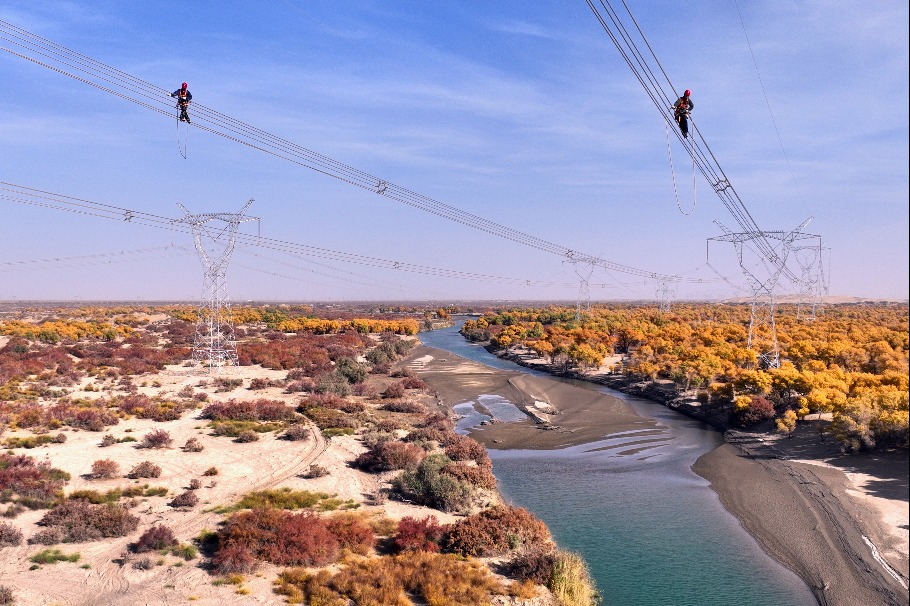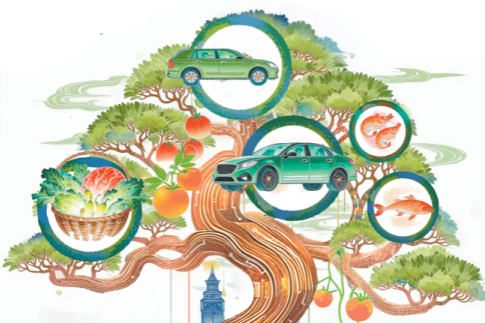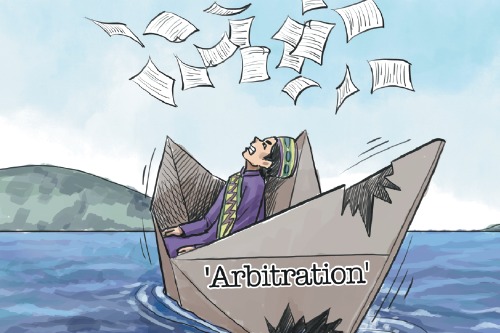Holistic healing


Financing needed for biodiversity and ecological protection as well as climate-related projects
A Chinese saying best sums up half measures and haphazard actions: "Treat the head when the head aches, and treat the foot when the foot hurts." Treating human bodies holistically is more effective in restoring a patient's health. Similarly, our planet, now threatened by climate change and biodiversity loss, also needs healing in a holistic way.
We are beginning to realize the intertwined nature between climate and biodiversity. Climate change aggravates biodiversity loss and weakens nature's capacity to absorb carbon, further hastening climate change. To break this vicious cycle requires addressing these two challenges simultaneously and with equal vigor.
Although there is growing consensus on this among scientists, policymakers, and financiers, globally financing for climate and biodiversity remains lopsided. Global climate financing reached $632 billion in 2019/2020, while biodiversity financing totaled just $124-$143 billion.
This contrast also exists in the deployment of green finance, where financing for climate efforts dwarfs that for biodiversity. According to the International Development Finance Club, of a total of $185 billion green finance commitments its members made in 2020,$179 billion or 96 percent went to climate finance, and only a meager $5.4 billion or 3 percent to biodiversity.
It is the same with green bonds issued in China. According to the China Green Bond Market Report 2020, of the $44 billion green bonds issued by Chinese entities in 2020, only about 5 percent were allotted for biodiversity or ecological protection, with the rest largely going to climate-related projects.
Many reasons drive this imbalance. In the climate space, greenhouse gas emissions can be credibly converted to CO2 equivalents, now a common currency to measure the contribution to climate change. This makes designing, financing, and monitoring climate-focused projects feasible. In contrast, quantifying ecosystem services and biodiversity (in either biophysical or monetary terms) is fiendishly difficult. Inevitably, this impedes investments that rely on quantifiable results.
Thanks to regulation to internalize the cost of carbon emissions, climate-focused projects (e.g., renewable energy development and energy efficiency) already have proven cash flows and attract sizable private investment. On the other hand, biodiversity still struggles to convert its benefits to human societies into financial revenue. Except for sustainable forestry, eco-tourism, mitigation banking, and a handful of other examples, "bankable" biodiversity projects are generally few and far between. This explains why most financing for biodiversity still comes from public sources.
Finally, biodiversity is often uniquely local, and projects designed for one place are therefore rarely directly replicable or scalable in other places. For their generally modest size and disparate nature, biodiversity projects don't conveniently fit the parameters of existing financial products and markets that favor standardization and economies of scale. So, biodiversity projects have a long way to go to take full advantage of modern financial markets' efficiency, reach and vast resources.
Nevertheless, ways to channel more financing into biodiversity conservation and bring about better alignment between climate and biodiversity do exist. To begin with, efforts to address climate and biodiversity must not undercut each other. For example, the land footprint of some clean energy infrastructure can be up to 12 times that of traditional energy sources, so where we place it is crucial. Without careful planning, well-intentioned clean energy infrastructure could endanger biodiversity and create additional financial burdens to restore impaired biodiversity.
We must step up efforts to explore the benefits of tackling both climate and biodiversity challenges with nature-based solutions. For example, restoring mangrove forests can deliver multiple benefits, from enhancing fish nurseries to storing carbon to mitigating the impacts of storm surges.
Encouragingly, China is jump-starting this effort by launching its National Mangrove Conservation and Restoration Action Plan, an initiative informed in part by a strategic study completed by the Paulson Institute and its partners. Under this plan, a total of 18,800 hectares of mangrove forests will be rehabilitated and planted by 2025.
In addition, China's national carbon emission trading system inaugurated in July 2021, and its planned expansion to cover eight high-emission sectors, has immense potential for scaling up nature-based solutions as it is expected to allow carbon credits generated from ecosystem-based projects to offset carbon emissions. Moreover, experts are also calling for the introduction of emissions allowance auctioning and allotment of a portion of the proceeds to ecosystem protection and restoration, which will help boost financing for biodiversity.
Seeking innovative ways to bridge the gap between biodiversity projects and existing financial markets is also imperative. For example, by combining replicable homogenous projects or bundling multiple heterogeneous projects into one diversified product, conservation projects may be structured into more marketable financial products, thus unlocking the vast financial resources that are increasingly looking for environmental, social and governance-themed investment opportunities. An example of this is the mangrove bonds that are gaining interest among financial institutions in and outside China.
Last but not least, exploring innovative mechanisms that help realize the economic value of ecosystem services by either leveraging existing markets or creating new ones must continue. For example, the New York Stock Exchange is exploring a new nature-based asset class in the form of Natural Asset Companies designed to capture and store nature's intrinsic and productive value.
Of course, for biodiversity finance to grow at scale, many other challenges must be addressed, such as strengthening the regulatory framework to value natural capital, building capacity, and implementing de-risking measures to incentivize private investment. In addition, reforming subsidies harmful to climate and biodiversity in the energy, agriculture, and fishery sectors and eliminating deforestation from soft commodity supply chains are essential to achieving climate and biodiversity goals more broadly.
Fundamentally, the climate and biodiversity crises are consequences of our current economic systems' failure to sufficiently value nature in all economic activities. To remedy this, we must transform our economies to recognize our natural capital's finite resources and services.
Healing our planet will take time and requires a holistic approach. Green finance and nature-based solutions already demonstrate their potential in achieving both climate and biodiversity goals, so we must speed up and scale up our actions. "Time and tide wait for no man "never rings truer than today.
Zhu Li is director of the conservation program at the Paulson Institute. Niu Hongwei is the chief conservation officer with the institute. Terry Townshend is an adviser to the institute.
Contact the editor at editor@chinawatch.cn
































